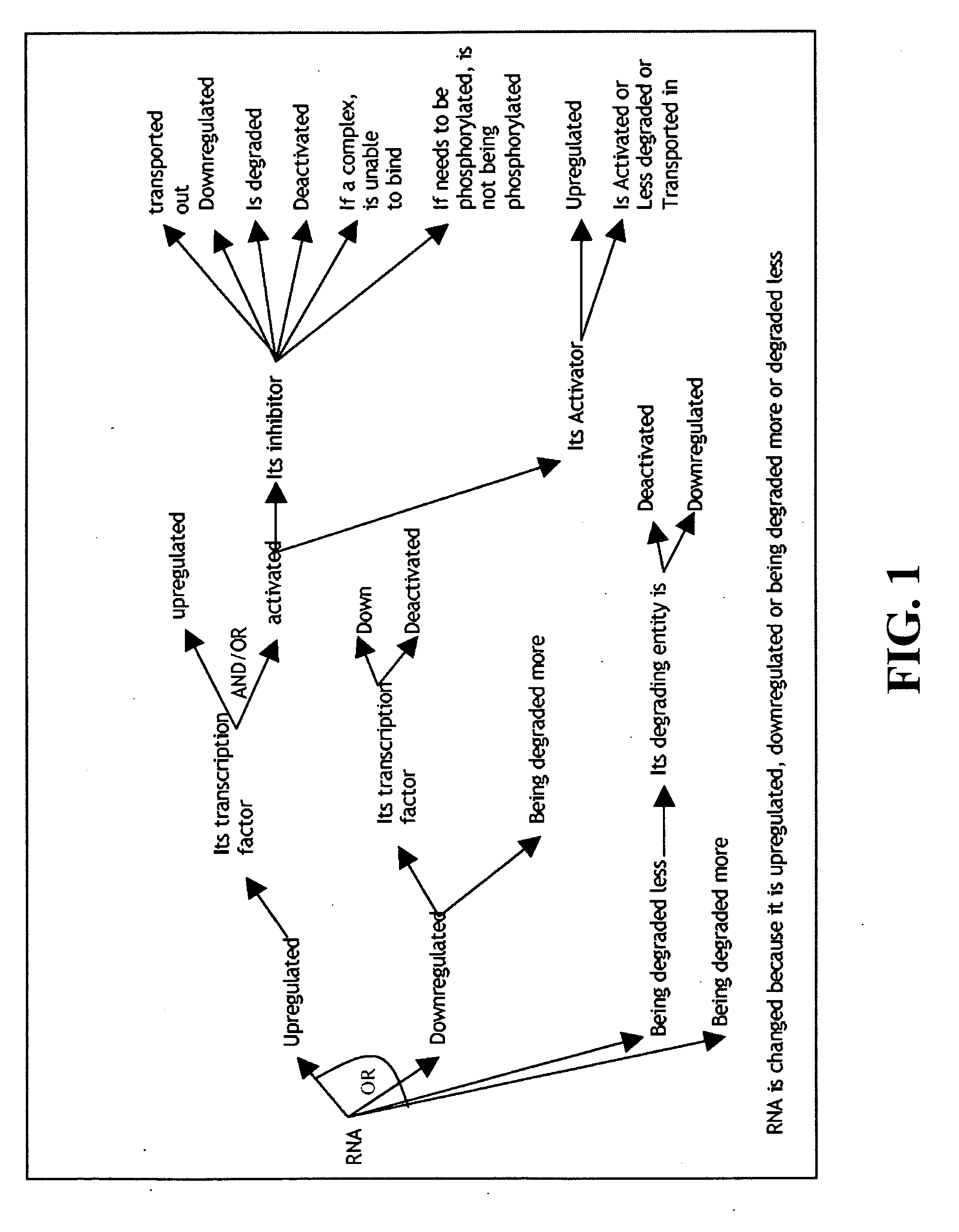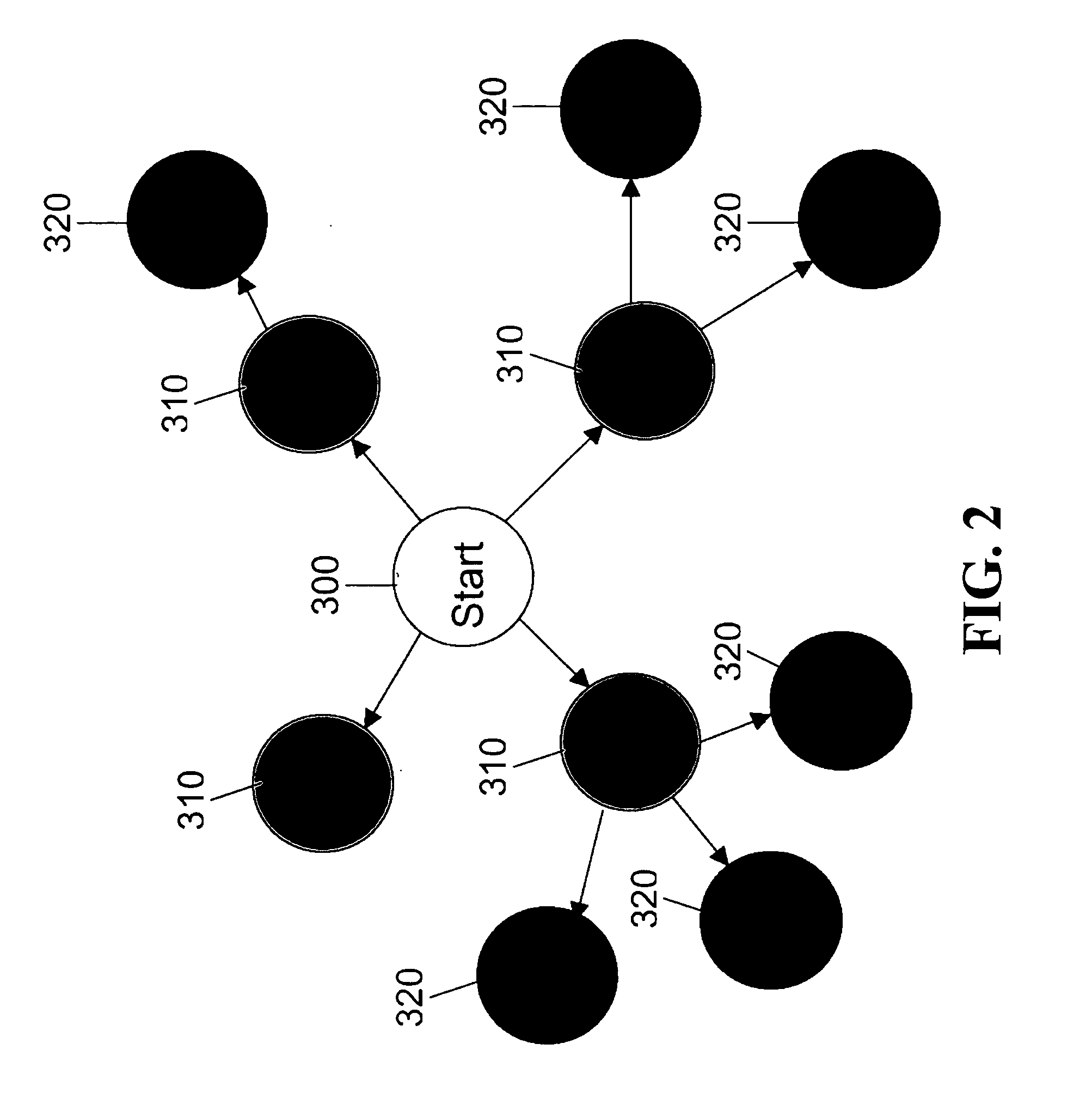System, method and apparatus for causal implication analysis in biological networks
a biological network and causal implications technology, applied in the field of biological network causal implications analysis systems and systems, can solve the problems of reducing the practical value of biological systems, so as to facilitate understanding and revelation of hidden interactions, facilitate rapid and efficient analysis relationships, and effectively model biological systems
- Summary
- Abstract
- Description
- Claims
- Application Information
AI Technical Summary
Benefits of technology
Problems solved by technology
Method used
Image
Examples
example
Validation Algorithm for Biological Models
[0104] An example of an algorithm for use in validating a biological model by comparing predicted to actual results is described below and in the pseudo code in FIG. 16. This algorithm assumes that there exists a knowledge base representing a biological system with data from gene expression experiments mapped onto the knowledge base.
[0105] The predicted results can be determined in two stages. First, a backward simulation as described herein is run on a knowledge base to determine potential causes of the gene expression changes. The backward simulation produces a list of genes and a score for each. The score for each node is based on the “votes” it received during the backward simulation. At the beginning of the backward simulation, nodes representing genes which are significantly upregulated are assigned positive votes, while those which are significantly downregulated are assigned negative votes. During the simulation, votes are copied f...
PUM
 Login to View More
Login to View More Abstract
Description
Claims
Application Information
 Login to View More
Login to View More - R&D
- Intellectual Property
- Life Sciences
- Materials
- Tech Scout
- Unparalleled Data Quality
- Higher Quality Content
- 60% Fewer Hallucinations
Browse by: Latest US Patents, China's latest patents, Technical Efficacy Thesaurus, Application Domain, Technology Topic, Popular Technical Reports.
© 2025 PatSnap. All rights reserved.Legal|Privacy policy|Modern Slavery Act Transparency Statement|Sitemap|About US| Contact US: help@patsnap.com



